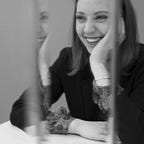THE MOON AND CHANGE
I clearly have a thing for the moon. On December 17th 2020, I was joined by one of the most brilliant minds of our times, author and activist Margaret Atwood, by a forerunner of gender equality in diplomacy Ambassador of Canada to Italy Alexandra Bugailiskis, and by the Maxxi Foundation President Giovanna Melandri, to talk about the moon as a catalyst for change. Hosted by the Maxxi Museum, the conversation was generously supported by the Canadian Embassy to Italy.
This was one of the many close encounters I had with the moon over the years. In 2018 I worked with Words of Colour, the Borough of Greenwich, the National Heritage Lottery Fund and the Royal Observatory to collect, analyse and archive hundreds of stories about the moon from Londoners. In 2019 I set up the Moon Festival, a moon themed, week-long takeover of the Greenwich headlined by Margaret Atwood, Dr. Maggie Aderin Pocock and London Night Czar Amy Lamè. In early 2020, I run a Canada themed editorial project exploring the significance of the moon in Canadian culture. I have carried out in depth interviews with spiritual leaders and artists from places as varied as Ecuador, Italy and the UK asking about their reationshpi to the moon. I have nattered about the moon on the Today Programme on BBC Radio 4, on ITV news, at the British Library, in community halls, at Goldsmiths University and at the Royal Observatory. Again: I clearly have a thing for the moon.
What I’d like to do with this piece is to go some way towards explaining why.
To put it simply, it’s because we clearly need a symbol to think the big changes of our time with, and the moon is a very good candidate for the job. As humans we build our shared reality through symbols onto which we then map stories. No one can tell where we would be today without the hammer and sickle, the uneven armed cross or the Coca Cola logo, but we can be pretty sure it wouldn’t be here. Powerful symbols can structure our thoughts, which is one more reason why we need to be very careful about the symbols we give attention to. A good symbol to think our times with, I figured, needs to do two things: to help us make sense of a world changing at impossible speed, and to lead us in the direction of a future we feel more at home with: one of female empowerment and re-attunement with nature, of stronger community bonds and of wild thought. And so, as I went stumbling in the dark, looking for something that would fit the bill, we chanced upon the brilliance of the moon. Her availability was a pleasant surprise.
In her seminal book on the moon in culture, Jules Cashford tells us that the one story about the moon that we find repeated over and over across cultures and across history, is the story of change. Observing and giving meaning to its regular waxing and waning is what helped humans cope with the rather uncomfortable awareness that everything changes and that along with change, comes death. And so for millennia, the moon cheered us up by reminding us that for every dark night, there is a glowing crescent and that following death, there is always rebirth.
As I write this, we’re still very much in the midst of a pandemic. I believe that the story of change embodied by the moon can be both helpful to process the collective trauma we are experiencing, and hopeful in the kind of shared imagined narratives it opens up.
Of course change won’t be easy. We spent the last 2000 years minimising the role it plays in our lives. We clung on to control with such stubbornness that we almost convinced ourselves we were in the driver’s seat. We did it by erecting skyscrapers, by hiding death away, by imposing impossible mores over the ones we love, by dividing time up into the smallest of units, and by filling each one of them with mindless tasks. But the challenges our species face at the end of 2020 are such that the control story is no longer viable. The moon, and the stories we can tell through it, offers an intriguing alternative.
Livs
